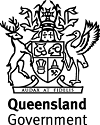Published Monday, 13 October, 2025 at 10:15 AM

JOINT STATEMENT
Premier and Minister for Veterans
The Honourable David Crisafulli
Minister for Health and Ambulance Services
The Honourable Tim Nicholls
New CT and MRI machines boost medical imaging capacity
- The Crisafulli Government is delivering on a key election commitment with the installation of new medical imaging machines in 11 public hospitals and health facilities across the State.
- The installation of an additional nine CT scanners and 6 MRI machines will ensure more Queenslanders have access to the healthcare they need when they need it.
- Locations have been chosen following a health-needs assessment which highlighted Redland and other locations as priority areas.
- The Crisafulli Government is delivering easier access to health services, and a fresh start for Queensland.
The Crisafulli Government is delivering health services when you need them with new diagnostic imaging technology for 11 locations across the State.
The new technology is part of a $276 million investment and delivers on a key election commitment, helping heal Labor’s Health Crisis.
The six new MRI machines and nine CT scanners will be installed at 11 health facilities as part of the program, taking pressure on existing facilities to help deliver healthcare when Queenslanders need them:
- Redland Hospital (MRI)
- Eight Mile Plains Satellite Health Centre (MRI and CT)
- Brighton Health Campus (MRI and CT)
- Southport Health Precinct (MRI and CT)
- Cairns South Health Facility (MRI and CT)
- Hervey Bay Hospital (MRI)
- Ayr Hospital (CT)
- Beaudesert Hospital (CT)
- Charleville Hospital (CT)
- Dalby Hospital (CT)
- Gatton Hospital (CT)
The new MRI machines represent an almost 20% increase in MRI capacity in Queensland’s public hospitals and health centres, while nine new CT scanners will boost capacity by more than 10%.
Queensland Health’s 31 current MRI machines perform more than 123,000 scans across the State annually, including more than 42,000 in the greater Brisbane area.
A decade of decline under Labor left the State’s health system on life support, with ambulance ramping and elective surgery waitlists skyrocketing year on year.
The investment is part of the Crisafulli Government’s fully-funded Hospital Rescue Plan, delivering the largest investment in hospital infrastructure in Queensland’s history.
Premier David Crisafulli said the Government was delivering the fresh start Queenslanders voted for, as promised.
“We are delivering easier access to health services so Queenslanders have the care they need, when they need it most,” Premier Crisafulli said.
“These new CT and MRI machines will bolster our rural and regional health services and free up more hospital beds across the State.
“While we are seeing elective surgery down and important progress on the Hospital Rescue Plan, there is much more to be done to restore health services when you need them, and we remain committed to delivering the fresh start we promised.”
Minister for Health and Ambulance Services Tim Nicholls said having these machines on-site enabled clinicians and staff to do their jobs and support their local community.
“Access to local medical imaging services supports health care when Queenslanders need it allowing serious medical conditions to be diagnosed and treated earlier,” Minister Nicholls said.
“For a decade the former Labor Government underinvested in regional and rural health services, resulting in Queenslanders struggling to access essential health care.
“Our record $33.1 billion Health Budget provides the resources needed to stabilise elective surgery waitlists, begin the task of reducing ambulance ramping and deliver three new hospitals, 10 hospital upgrades and expanded health facilities across the State with the fully funded Hospital Rescue Plan.
“We’re committed to delivering health infrastructure where it is most needed and putting the health and wellbeing of Queenslanders first.”
ENDS
MEDIA CONTACT: David McLachlan 0428 716 171
BACKGROUND
Magnetic Resonance Imaging (MRI) machines produce detailed images of the body, helping to diagnose a variety of conditions including tumours, infections, inflammation, organ diseases, and traumatic injuries.
Computerised tomography (CT) uses x-rays with detectors to look at any part of the body in cross section (slices), with a powerful computer to build a detailed 2D and 3D image of the specific area of the body.

